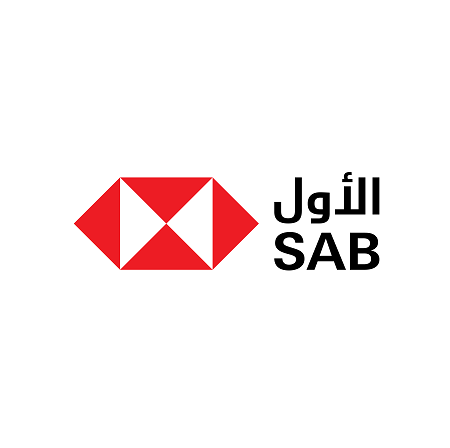-
Wealth Management
-
-
Low Limit Credit Cards
-
Debit Cards
-
Prepaid Card
-
ICSAB+
-
Finance
-
Help & Support
-
-
Help & Support
-
Cards
-
-
-
Tools & Resources
-
Ways to Bank
-
Help & Support
-
ESG at SAB
-
Security
-


Frequently Asked Questions
Have questions about SAB banking services? Let us help you with these frequently asked questions.
FAQSCustomer Service
Our friendly Customer Support team are on hand to help with any queries you have. We're here to help!
Contact UsQuick Links

Stabilising market behind move to hike oil output

Saudi Arabia, along with its OPEC+ partners, had started a gradual and flexible return of the 2.2 million barrels per day (bpd) production cut from 1 April. The eight participating countries, which also include Russia, Iraq, United Arab Emirates, Kuwait, Oman, Kazakhstan, and Algeria, will implement a production adjustment of 411,000 bpd.
Taking into account the ongoing strength of market fundamentals and a generally positive outlook, the eight participating countries reaffirmed their commitment to the phased and flexible return of the 2.2 million bpd of voluntary output cuts.
However, the participating countries emphasised that the pace and scale of future production increases remain subject to change, depending on how market conditions evolve.
The group said it retains the flexibility to pause or reverse the increases if necessary. This flexibility is intended to help maintain stability in the global oil market, allowing the group to respond dynamically to shifts in demand and supply. Moreover, the eight countries noted that this strategy will create an opportunity for participating nations to accelerate their compensation efforts.
The next meeting is scheduled for 5 May this year, during which the group will determine production levels for June.
The United States Department of Energy said it expects global oil inventories to increase starting in the middle of 2025 as OPEC+ members unwind production cuts, and production grows in non-OPEC countries.
OIL TAKES A HIT FROM TARIFFS
In March, the OPEC Reference Basket fell 3.7% month-on-month to average USD 74 per barrel.
Oil prices saw a sharper decline in the first half of March, driven largely by the US decision to impose new tariffs on imports from Mexico, Canada, and China. The move sparked fears of a broader trade war, raising concerns about its potential impact on global economic growth and, in turn, energy demand.
These concerns were somewhat eased by a subsequent announcement that certain tariffs would be delayed. Adding to the downward pressure, a substantial build in US crude inventories weighed on market sentiment. However, the weakening of the US dollar offered some support to oil futures, as a softer dollar tends to make oil more affordable for buyers using other currencies, potentially stimulating demand.
“Crude oil futures rebounded in the second half of the month, driven by escalating geopolitical tensions in the Middle East, and new US sanctions on shipping entities and a Chinese refinery, which raised supply concerns,” OPEC noted. “However, gains were limited as traders remained cautious about ongoing trade policy uncertainties and the risk of retaliatory measures that could hinder global economic growth and intensify trade tensions.”
OIL DEMAND OUTLOOK
OPEC’s latest monthly report forecasts global oil demand to rise by 1.3 million bpd on a year-on-year (YoY) basis, with the bulk of this growth coming from non-OECD regions particularly China, India, and Other Asia.
Focusing on transportation fuels, global demand for jet fuel/kerosene is anticipated to rise by about 0.5 million bpd YoY in the second, third, and fourth quarters of 2025. Gasoline demand is also forecast to increase at a similar rate of 0.5 million bpd YoY during those quarters. Diesel demand is expected to soar more moderately, by 0.1 million bpd in the second quarter and around 0.2 million bpd in both the third and fourth quarters.
Within the OECD, oil demand is likely to come under pressure due to the impact of newly implemented US tariffs on imports. As a result, oil demand in the OECD Americas is forecast to contract by around 70,000 bpd YoY in the second quarter of 2025. OECD Europe is poised to see a modest decline of about 20,000 bpd, while demand in the OECD Asia Pacific region is projected to remain flat during the same period.
China is expected to drive oil demand, supported by strong mobility and industrial activity, growing by about 0.2 million bpd YoY in the second quarter, and 0.3 million bpd each in the third and fourth quarters of 2025. Similarly, India’s oil demand is forecast to grow by 0.2 million bpd in each of the next three quarters.
ECONOMY
Employment rate remains on an upward trajectory, despite challenging market conditions, as the kingdom’s real GDP expands.
ESG
The project will source 100% of its electricity from clean energy and aims to support high-density computing workloads amid skyrocketing demand for data.
GLOBAL ECONOMY
An escalation of trade restrictive measures could heighten risk of disrupting worldwide supply chains and stifling exports and imports.
MANUFACTURING
Localising the value chain and talent pool will be integral to the country’s goal of fostering innovation and stimulating production in the industry.
Your are now leaving this site
Your are now leaving this site
You are about to leave this site. You are being redirected to an external site. Would you like to leave this site?
© SAB, Saudi Arabia. All Rights Reserved, 2025
Saudi Awwal Bank, a listed joint stock company, incorporated in the Kingdom of Saudi Arabia, with paid in capital of SAR 20,547,945,220, commercial registration certificate 1010025779, unified number 7000018668, Mailing Address: P.O. Box 9084, Riyadh 11413. National Address: 7383 King Fahad Branch Rd, 2338 Al Yasmeen Dist., 13325 Riyadh, Kingdom of Saudi Arabia, Tel. +966 11 4050677, www.sab.com, licensed pursuant to the Council of Ministers Resolution No. 198 dated 06/02/1398H and Royal Decree No. M/4 dated 12/08/1398H, and regulated and supervised by the Saudi Central Bank.

